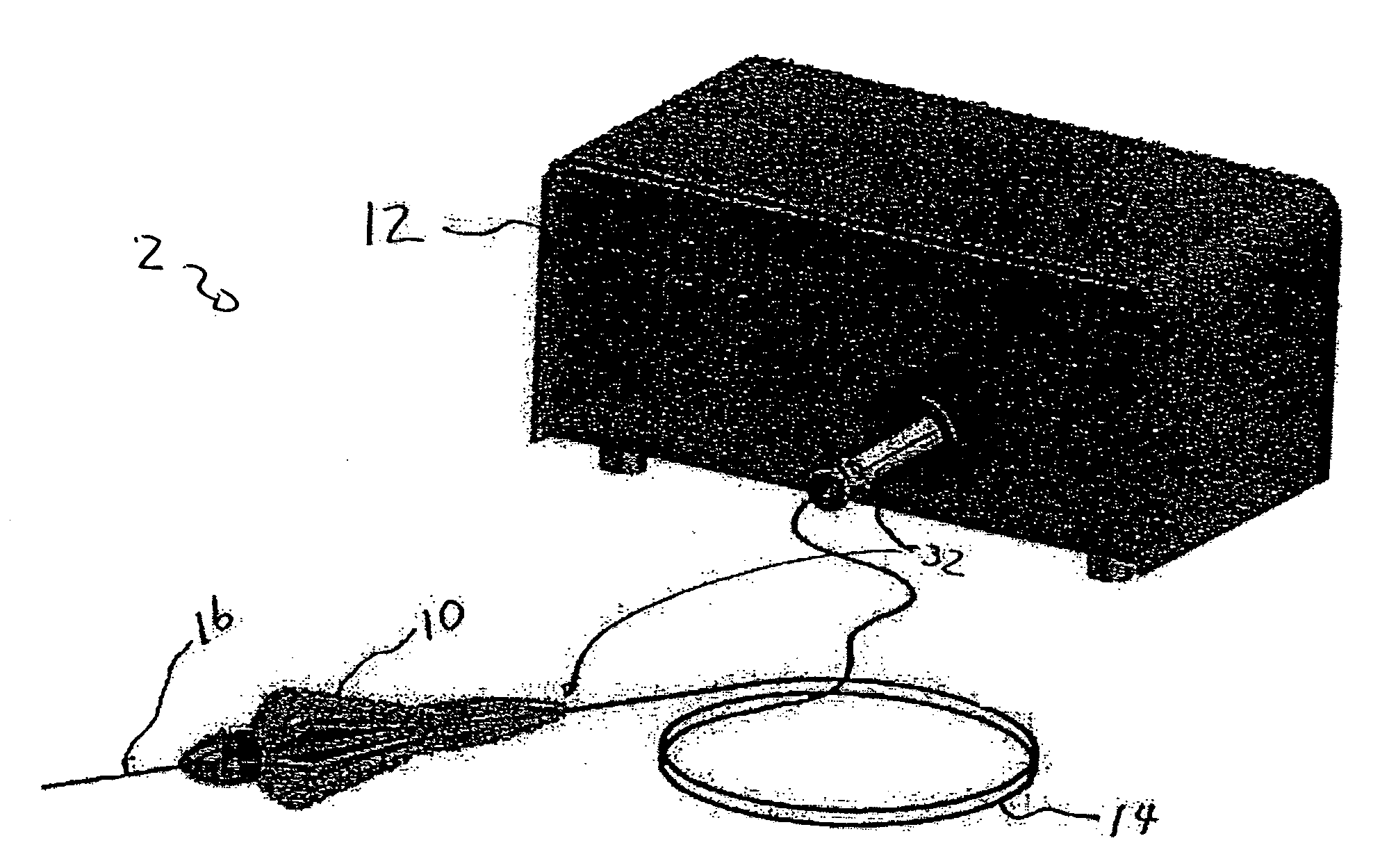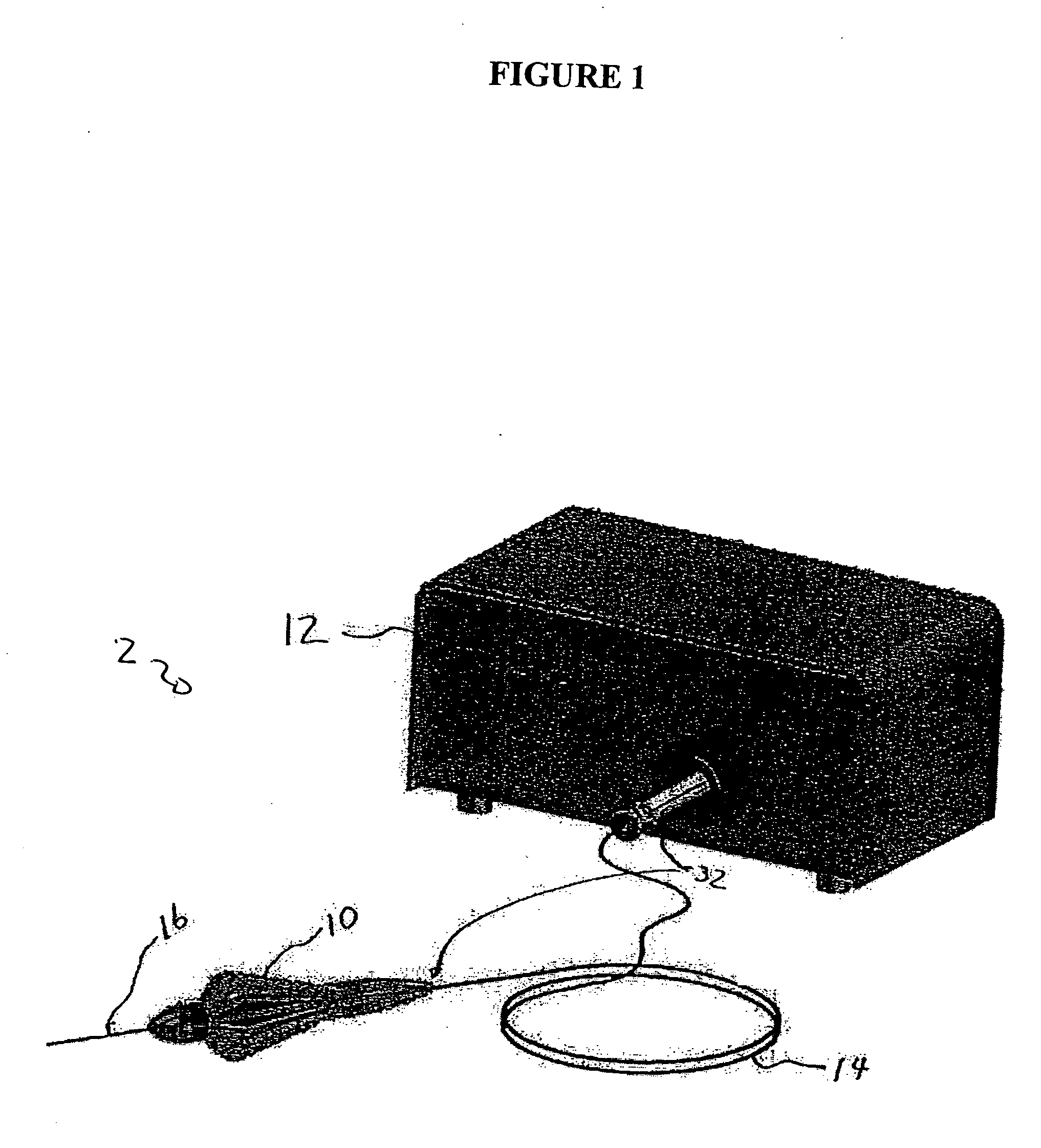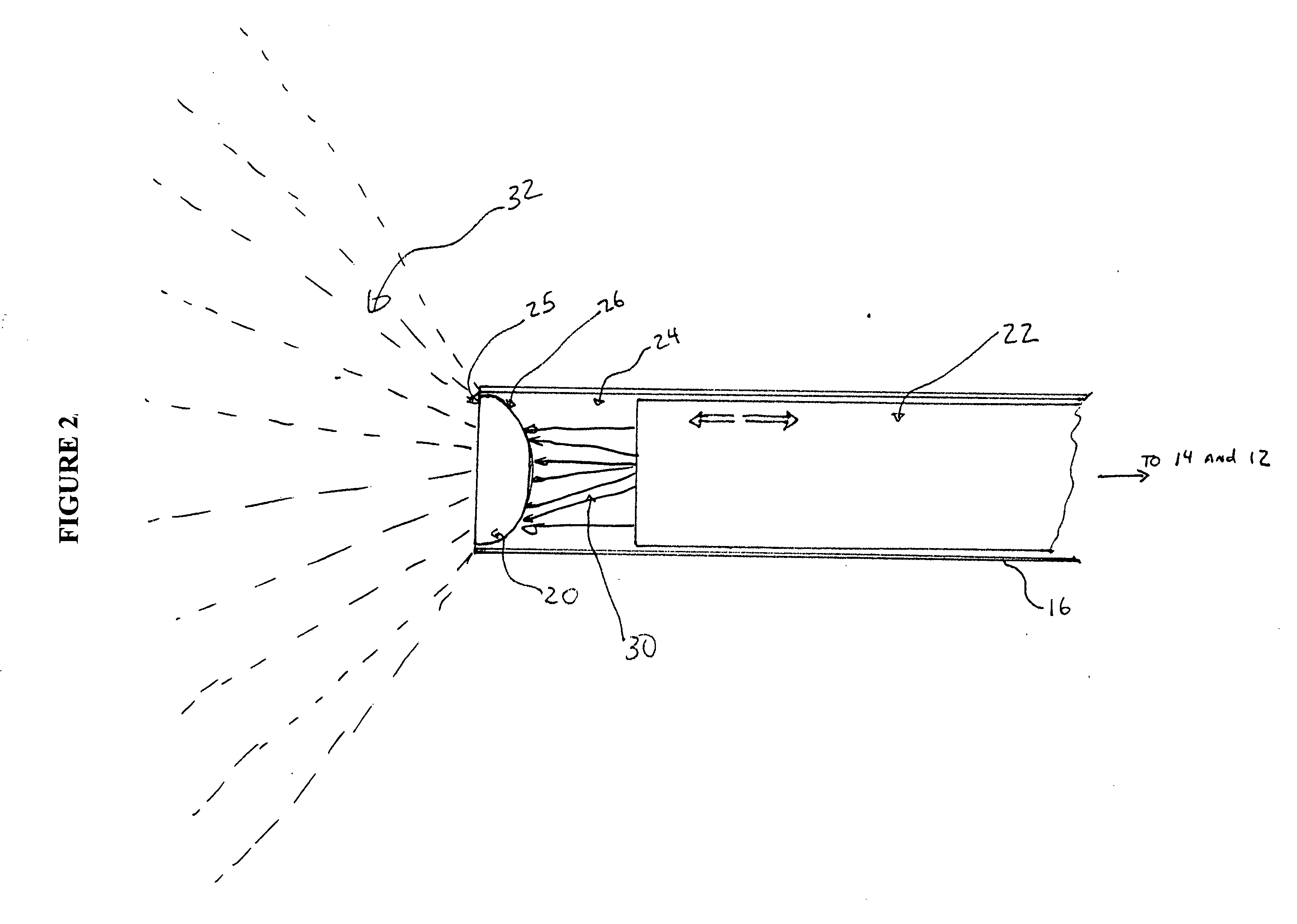Variable intensity wide-angle illuminator
a wide-angle illuminator and variable intensity technology, applied in the field of surgical instruments, can solve the problems of sub-optimal light refraction, wide-angle illuminators for ophthalmic surgery, and matching the light refracting index of vitreous eye fluid
- Summary
- Abstract
- Description
- Claims
- Application Information
AI Technical Summary
Benefits of technology
Problems solved by technology
Method used
Image
Examples
Embodiment Construction
[0017] Preferred embodiments of the present invention are illustrated in the FIGURES, like numerals being used to refer to like and corresponding parts of the various drawings.
[0018] The various embodiments of the present invention provide for a small gauge (e.g., 19, 20, or 25 gauge) optical fiber based endo-illuminator device for use in surgical procedures, such as in vitreo-retinal / posterior segment surgery. Embodiments of this invention can comprise a handpiece, such as the Alcon-Grieshaber Revolution-DSP™ handpiece sold by Alcon Laboratories, Inc., Fort Worth, Tex., connected to a small gauge cannula (e.g., 19, 20, or 25 gauge). The inner dimension of the cannula can be used to house one, or a plurality of, optical fibers terminating in a diffusive optical element in accordance with the teachings of this invention. Embodiments of the wide-angle illuminator can be configured for use in the general field of ophthalmic surgery. However, it is contemplated and it will be realized ...
PUM
 Login to View More
Login to View More Abstract
Description
Claims
Application Information
 Login to View More
Login to View More - R&D
- Intellectual Property
- Life Sciences
- Materials
- Tech Scout
- Unparalleled Data Quality
- Higher Quality Content
- 60% Fewer Hallucinations
Browse by: Latest US Patents, China's latest patents, Technical Efficacy Thesaurus, Application Domain, Technology Topic, Popular Technical Reports.
© 2025 PatSnap. All rights reserved.Legal|Privacy policy|Modern Slavery Act Transparency Statement|Sitemap|About US| Contact US: help@patsnap.com



